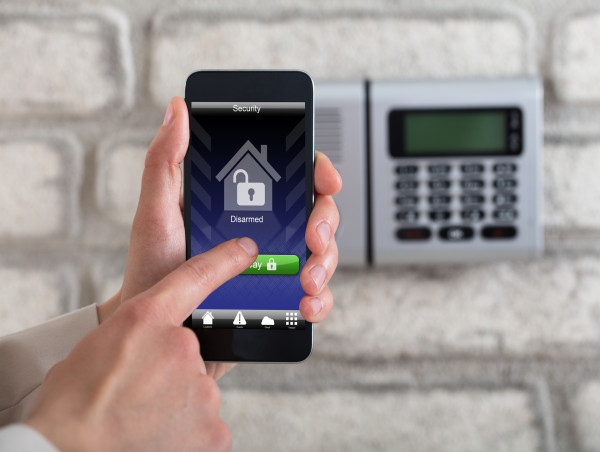Mobile access control enables building owners and facility managers to regulate access using smartphones, cloud-based platforms, and encrypted credentials—effectively replacing keycards, badges, or manual locks with scalable, programmable alternatives. This approach introduces a higher level of control and flexibility, especially across multi-site operations.
Don Tucker, owner of D&D Audio and Video Solutions in Slidell, Louisiana, has watched the commercial sector move steadily toward mobile-enabled systems in recent years. “What’s changed isn’t just the hardware—it’s the way businesses are thinking about security,” said Tucker. “It’s no longer just about who gets in, but how, when, and for how long.”
This transition is driven by several forces, including the rise of hybrid work models, the need for contactless interactions, and increasing awareness of real-time data access and audit trails. Traditional lock-and-key systems offer no record of entry or time-stamped activity. Even legacy keycard systems fall short when it comes to remote management or rapid credential changes.
Mobile access control solves many of these problems. Credentials are issued digitally, often via secure apps or encrypted links, and can be deactivated instantly. Lost keycards no longer mean rekeying an entire building, and credentials don’t get passed around or copied. Administrators can grant or revoke access in seconds—whether from a back office or halfway across the country.
In multi-tenant buildings, the technology allows for seamless transitions between authorized users. Vendors, contractors, and cleaning crews can be given access during specific hours, with built-in expiration. Credentials can be configured to allow entry to select doors or zones only, creating granular control over internal movement.
From a security standpoint, audit logs provide detailed entry histories for every credential used. This data is valuable for both operational review and incident response. Businesses in regulated industries—like healthcare, education, or finance—also benefit from automated compliance reports and traceable access logs.
Another benefit is integration. Mobile access control systems are now compatible with a wide range of third-party platforms, allowing them to sync with HR databases, video surveillance systems, and emergency alert tools. When used alongside surveillance, these systems allow administrators to match access events with corresponding timestamps—streamlining investigations and internal reviews.
Implementation varies based on building type and traffic volume. Smaller facilities may opt for cloud-only systems, while larger operations with multiple entry points often combine on-premise servers with mobile interfaces for added redundancy. In both cases, systems can be designed to scale without major infrastructure overhauls.
Security concerns about mobile systems typically focus on data privacy and network stability. However, most mobile access platforms use end-to-end encryption and secure credential storage, often following the same standards used in financial and medical industries. Additionally, biometric multi-factor authentication—such as facial recognition or fingerprint scanning—can be layered into credential access for enhanced identity verification.
Power and connectivity are also taken into account. Systems can include battery backups, offline credential validation, and fail-secure/fail-safe locking configurations depending on business needs.
Industries leading the shift toward mobile access control include commercial real estate, healthcare, logistics, education, and high-tech manufacturing. Many organizations in these sectors require the ability to manage large numbers of personnel with varying levels of clearance, often spread across multiple sites. Mobile systems reduce friction while enhancing compliance and situational control.
Don Tucker noted, “Businesses want smarter, more responsive ways to manage entry points, especially as staffing, liability, and insurance considerations continue to evolve. Mobile access systems are giving them tools that traditional methods simply can’t offer.”
Costs depend on hardware, software, and integration scope. However, many businesses find that the long-term reduction in risk, downtime, and maintenance justifies the upfront investment. Legacy systems often involve recurring card production, manual lock replacement, and employee downtime for badge replacement. Mobile systems reduce or eliminate many of these recurring costs.
Looking ahead, mobile access control is expected to evolve even further. Trends include:
Enhanced biometric authentication linked to mobile credentials
Greater integration with AI-driven analytics
Expanded use of geofencing and location-based automation
Voice-activated or wearable-device access support
This shift reflects broader trends in commercial technology: systems that are connected, adaptive, and efficient. While physical locks and keycards will likely remain in limited use for the near future, mobile access is quickly becoming the standard for facilities that value control, flexibility, and accountability.
D&D Audio and Video Solutions provides security infrastructure consultation and implementation across Southeast Louisiana. Led by Don Tucker, the company works with commercial facilities to design and integrate scalable access control systems aligned with current industry demands.
Morgan Thomas
Rhino Digital, LLC
+1 504-875-5036
email us here
Visit us on social media:
Facebook
Legal Disclaimer:
EIN Presswire provides this news content "as is" without warranty of any kind. We do not accept any responsibility or liability for the accuracy, content, images, videos, licenses, completeness, legality, or reliability of the information contained in this article. If you have any complaints or copyright issues related to this article, kindly contact the author above.
![]()



